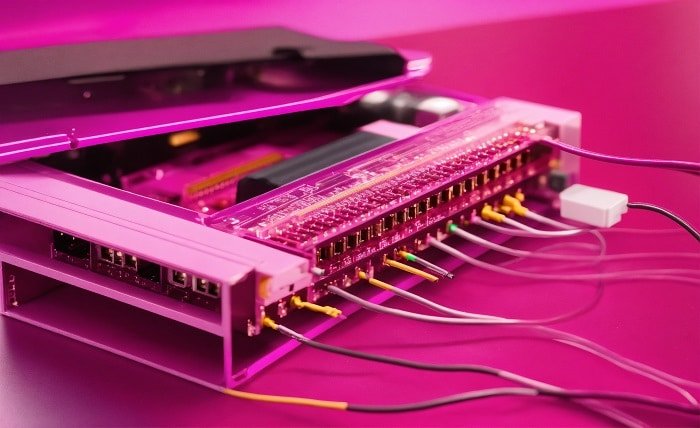The year 2001 marked a pivotal time in the mobile phone industry, with numerous technological advancements that began to change how we communicate. Phones in 2001 were far from the smartphones we use today, but they represented the cutting-edge innovation for their time. From basic monochrome screens to early versions of text messaging, the mobile phones of 2001 paved the way for future advancements. Nokia, Motorola, and Ericsson dominated the market, and mobile phones were becoming more accessible to everyday consumers. This blog will explore the key features and popular models of phones in 2001, providing a detailed look into this transformative era.
2. The Dominance of Nokia in 2001
When discussing phones in 2001, it’s impossible to ignore the impact Nokia had on the mobile phone industry. Nokia was the top manufacturer at the time, releasing some of the most popular models that year. The Nokia 3310, in particular, became an iconic device with its durable build and long battery life. It was known for its simple yet reliable design, making it a favorite among users. Another popular model was the Nokia 8210, which was praised for its compact size and customizable features. These phones in 2001 were designed for voice calls and text messaging, with limited internet capabilities, yet they captured the market with their ease of use and functionality.
3. Text Messaging Takes Off with Phones in 2001
One of the most significant features of phones in 2001 was the growing popularity of text messaging, also known as SMS (Short Message Service). Though introduced in the 1990s, text messaging saw a massive surge in usage during 2001, as more mobile phones were equipped with easy-to-use keypads. Phones like the Nokia 3310 made sending text messages more accessible, with users enjoying the ability to communicate quickly without making a voice call. SMS became a defining feature of phones in 2001, shaping communication trends for the years that followed. It was also the precursor to modern instant messaging and social media platforms.
4. The Transition from Monochrome to Color Screens
While phones in 2001 were still mostly equipped with monochrome displays, the transition to color screens was just beginning. One of the first phones to introduce a color display was the Ericsson T68, which featured a 256-color screen, a groundbreaking innovation at the time. This shift in display technology marked the start of a new era for mobile devices, where visual experiences would become increasingly important. Though most phones in 2001 still had simple black-and-white displays, the introduction of color screens paved the way for more advanced features such as multimedia messaging and early mobile games.
5. Ringtones and Customization in Phones in 2001
Customization was a big deal with phones in 2001, especially when it came to ringtones. Users loved the ability to personalize their phones with monophonic and polyphonic ringtones. Many models, like the Nokia 3310 and Motorola V60, allowed users to download or create their ringtones, making each phone feel unique to its owner. The popularity of custom ringtones was a defining characteristic of phones in 2001, as people began to express their personalities through their devices. This was the beginning of a trend that would lead to more advanced customization options in the years to come.
6. Early Internet Capabilities on Phones in 2001
Though limited by today’s standards, phones in 2001 began to introduce basic internet capabilities. WAP (Wireless Application Protocol) allows users to access stripped-down versions of websites on their mobile devices. Phones like the Nokia 7110 and Ericsson R380 were among the few models offering this feature, which marked the first steps towards mobile browsing. Although the browsing experience was slow and minimal, it demonstrated the growing interest in bringing the internet to mobile devices. Phones in 2001 were laying the groundwork for future developments in mobile internet, leading to the full-featured smartphones we have today.
7. The Role of Motorola and Ericsson in 2001
While Nokia dominated the market, Motorola and Ericsson also played significant roles in the mobile phone landscape of 2001. Motorola V60 was a popular flip phone that featured a sleek design, metal casing, and support for basic internet access. Its compact and stylish form made it a favorite among business professionals. Meanwhile, Ericssonthe T68 was notable for being one of the first phones to offer a color screen, as well as Bluetooth connectivity. These phones in 2001 showcased the technological diversity of the time, with different manufacturers experimenting with designs and features to attract a wide range of users.
8. The Impact of Flip Phones in 2001
Flip phones were an important design trend among phones in 2001. These devices were popular due to their compact size and stylish appearance. The Motorola V60 and Samsung SGH-T100 were among the most well-known flip phones of the time, offering users a convenient way to carry their phones in pockets and bags. The clamshell design also provided added protection for the screen and keypad, making it a practical choice for many users. Flip phones in 2001 helped set the stage for future innovations in mobile phone design, emphasizing portability and aesthetics.
9. Battery Life and Durability of Phones in 2001
One of the most praised features of phones in 2001 was their long battery life and durability. Phones like the Nokia 3310 were known for their ability to last several days on a single charge, a far cry from the smartphones of today that often require daily charging. These phones were also incredibly durable, withstanding drops and rough handling with ease. The strong battery life and sturdy design of phones in 2001 made them reliable devices for everyday communication, particularly for users who were not yet reliant on constant internet access or multimedia usage.
10. How Phones in 2001 Shaped Modern Mobile Technology
While phones in 2001 may seem primitive compared to modern smartphones, they played a crucial role in shaping the future of mobile technology. The introduction of features like text messaging, color screens, early internet access, and customizable ringtones created the foundation for more advanced devices. These innovations sparked the imagination of both users and manufacturers, leading to the rapid evolution of phones over the next two decades. The success of phones in 2001 demonstrated that mobile technology was moving beyond basic communication, toward the multifunctional devices we rely on today.
Conclusion
Looking back at phones in 2001, it’s clear that this was a transformative year in the mobile phone industry. With the rise of text messaging, early internet browsing, and customizable features, these devices were more than just tools for making calls—they were personal, versatile gadgets that connected people in new and exciting ways. Phones in 2001 were the stepping stones that led to the development of modern smartphones, influencing the design, features, and functionality of the mobile devices we use today. Though much has changed since then, the innovations of phones in 2001 remain a vital part of mobile technology’s history.
FAQ
1. What were the most popular phones in 2001?
Some of the most popular phones in 2001 included the Nokia 3310, Motorola V60, and Ericsson T68, known for their durability, innovative features, and ease of use.
2. Did phones in 2001 have internet access?
Yes, some phones in 2001 offered basic internet access through WAP (Wireless Application Protocol), although the browsing experience was limited and slow compared to today’s standards.
3. Were there color screens on phones in 2001?
While most phones in 2001 had monochrome screens, models like the Ericsson T68 introduced color displays, marking the beginning of a shift toward more advanced visual features.
4. How long did the battery life of phones in 2001 last?
Phones in 2001 were known for their excellent battery life, with many devices like the Nokia 3310 lasting several days on a single charge, thanks to their limited features and energy efficiency.
5. What role did text messaging play on phones in 2001?
Text messaging, or SMS, became a defining feature of phones in 2001, with users sending short messages instead of making calls, a trend that would evolve into modern-day messaging apps.



